Meet the fellowship of TICA
The International Compositae Alliance (TICA) is a vibrant community composed by many researchers with a wide gamut of interests, all revolving around the Compositae,
the largest plant family on Earth.

Geraldine Allen
I am a professor in the Department of Biology at the University of Victoria in British Columbia, Canada. I have diverse interests in plant systematics, evolution and conservation, especially in phylogenetics, phylogeography, and the flora of western North America. I have worked on various Asteraceae, mainly on North American members of the tribe Astereae. I am particularly interested in how hybridization and polyploidy shape plant evolution at every level, from species to major clades, and I have recently started learning how to apply the tools of genomics to questions in plant evolution.
gallen ( a ) uvic.ca

Bruce Baldwin
My research program encompasses vascular-plant systematics, floristics, and conservation biology. I am particularly interested in systematic questions that address evolutionary processes, historical biogeography and ecology, and relationships of California plants and their descendant lineages elsewhere (e.g., Hawaii). My research in tribe Madieae, e.g., on the California tarweeds, Hawaiian silversword alliance, and relatives, and in other Compositae tribes (Bahieae and Chaenactideae, especially) has involved testing of hypotheses concerning diversification processes and rates, chromosomal and morphological evolution, ecological shifts, dispersal events, and the evolutionary importance of hybridization.
www | bbaldwin ( a ) berkeley.edu

Nicola Bergh
I aim to elucidate species identities, phylogenetic relationships, and evolutionary histories of the Compositae of the Greater Cape Floristic Region.
www | n.bergh ( a ) sanbi.org.za

Ilse Breitweiser
I graduated as Diplom-Biologin from LMU Munich (1985), gained a PhD in Taxonomic Botany from UC, New Zealand (1991), then a PostDoc at VUW, New Zealand, and from 1993 a position at the BBGM Berlin-Dahlem. I have been at the Allan Herbarium, MWLR, Lincoln, New Zealand since 1995, first as science leader for plant systematics, then also of the Characterising Land Biota portfolio. My main research interests are systematics of New Zealand seed plants, especially Compositae, focusing on Gnaphalieae, and the development of New Zealand’s electronic Biota. I co-led the Global Working Checklist of Compositae, seed funded by GBIF, in 2006/7. I am now focusing on a revision of Craspedia (Gnaphalieae), work in Gnaphalieae, and contributing to our students’ work in New Zealand Astereae and Senecioneae.
www | breitwieseri ( a ) landcareresearch.co.nz

Mauricio Bonifacino
I am an associate professor at Universidad de la República in Montevideo at the schools of Agronomy and Natural Sciences. I specialize in the systematics of the flowering plant family Compositae with emphasis in Astereae. I have conducted fieldwork in Uruguay and also along the Andes, especially in Argentina and Chile. My research interests cover systematics of Compositae, and floristics. I teach botany, plant biology and plant systematics in Uruguay, and also the OTS tropical plant systematics course in Costa Rica.
www | mbonifa ( a ) gmail.com

Vinicius Bueno
"I Graduated in Biological Sciences from the Universidade Federal de Viçosa - Campus Rio Paranaíba and I obtained a Master's Degree in Plant Biology from the Universidade Federal de Uberlândia. Both at undergraduate and master's level I concentrated my studies on Heliantheae s.l. taxonomy.
I am currently a PhD student in Botany at UFRGS. I am the author of Calea, Dimerostemma and Isostigma for Flora do Brasil 2020.
My current research is about Calea (Neurolaeneae), specifically a complex within the Meyeria section. Due to these studies I have expanded my horizons and have been studying the whole Neurolaeneae tribe. Therefore, I am honored to be responsible for reviewing the Neurolaeneae for the GCDB."
vrbueno ( a ) outlook.com

Jason Cantley
My research is primarily focused on plant evolution in two different regions: Hawaii and California. Topics of interest include biogeography, systematics, conservation, and understanding the natural selective pressures of adaptive radiations.
www | cantley ( a ) sfsu.edu

Tim Collins
Recently completed a PhD project examining the taxonomy of Australian Gnaphaliaeae in Xerochrysum, Coronidium and Helichrysum leucopsideum using integrated NGS and morphological approaches.
Tim.Collins ( a ) environment.nsw.gov.au

Mauricio Diazgranados
I am interested in contributing to the study, sustainable use and conservation of plant and fungal diversity, particularly of tropical ecosystems, integrating various disciplines such as taxonomy, systematics, macroevolution, ecology, biogeography, and conservation biology. I am also intrigued by how climate change is impacting the biodiversity and how we can contribute from science to its conservation. I have particular interest in the páramos, a widespread ecosystem in the high elevations of the northern Andes of South America, considered the fastest evolving biodiversity hotspot. I have specialised on the study of the páramos' Compositae, which are an ideal study system for understanding not just rapid radiations but also the impacts of climate change.
www | espeletias ( a ) gmail.com

Florencia Dosil
I am studying taxonomy, phylogeny and biogeography of the genus Adenostemma Forst. & Forst. (Eupatorieae). I am mainly working with morphology of the neotropical species and their interaction with birds.
florencia.dosil ( a ) fcnym.unlp.edu.ar

Milan Gavrilović
Research Associate at Department of Morphology and Systematics of Plants, University of Belgrade - Faculty of Biology, Serbia. My PhD thesis was related to taxonomy (morphological, anatomical, phytochemical and molecular aspects) of the Xeranthemum group (now tribe Xeranthemineae).
Currently, the focus is wood and bark anatomy (taxonomic/phylogenetic/ecological aspects) of the members of the tribe Gnaphalieae from South Africa. Also, we are doing anatomical, morphological, molecular, phytochemical and bioactivity studies of Cardueae members as well as Anthemideae (Artemisia taxa). Besides systematic work, we carry out ethnobotanical research regarding relation of wild plants with people on the Balkans. I am interested in teaching, continuing education and dissemination of knowledge.
www | mgavrilovic ( a ) bio.bg.ac.rs
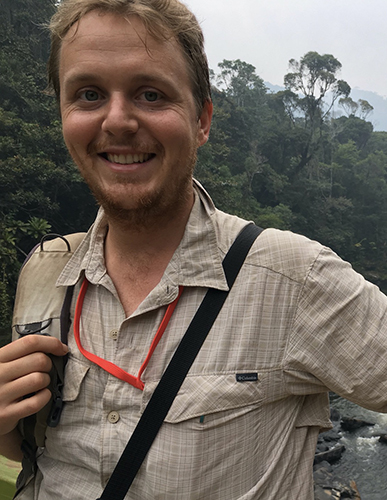
Morgan Gostel
My research combines traditional taxonomy and phylogenomics to understand the diversity of Compositae across landscapes. I am especially interested in radiations throughout dry forests in the neo- and paleotropics. My lab combines comparative morphology, high-throughput sequencing approaches, and biogeography to understand the process of evolution in dynamic environments and key evolutionary innovations that have led to diversification. I specialize in the flora of Africa and Madagascar and my current research projects involve a number of Compositae tribes, including Dicomeae, Gochnatieae, Tageteae, Tarchonantheae, and Vernonieae.
www | mgostel ( a ) brit.org

Abdelkarim Gounssa
My doctoral studies concern floristic analysis, morphological description and cytotaxonomic studies of Moroccan wild Asteraceae.
www | abdelkarimgounssa ( a ) gmail.com

Mariana Grossi
My academic interests are the systematics, evolution and biogeography of the Asteraceae of South America, specifically the Eupatorieae tribe.
www | apurimacia30 ( a ) gmail.com

Gustavo Heiden
I am a Botanist interested in systematics, biogeography, evolution, conservation and applied uses of the plants, especially South American Subtropical and Temperate flora. Major research interests include systematics and evolution of Asteraceae (specially Astereae and Baccharis); genetic resources and pre-breeding of crop wild relatives; curation and exploration of herbaria data. I obtained my Bachelor and Licenciate degree in Biology from Universidade Federal de Pelotas, Master in Botany from Jardim Botânico do Rio de Janeiro, and PhD from Universidade de São Paulo with sandwich PhD at Gothenburg University, Sweden. Currently, I am a researcher at Embrapa Clima Temperado, Pelotas, Rio Grande do Sul, Brazil.
www | gustavo.heiden ( a ) embrapa.br

Pedja Janackovic
Full Professor at Department of Morphology and Systematics of Plants, University of Belgrade - Faculty of Biology, Serbia. My academic interest and fascination is Asteraceae (Cardueae, Anthemideae, Gnaphalieae), their systematics based on micromorphology, anatomy, phytochemistry (chemophenetics), and molecular data. Currently, the focus is wood and bark anatomy (systematics and ecology) of the tribe Gnaphalieae from South Africa, and cypsela morphology and anatomy of the worldwide Asteraceae. Also, we are doing bioactivity studies of Cardueae as well as Anthemideae (Artemisia taxa). Besides systematic work, we carry out ethnobotanical research on the Balkans. I am a member of The International Compositae Alliance (TICA) (former name: Deep Achene: The Compositae Alliance) since 2000.
www | pjanackovic ( a ) bio.bg.ac.rs
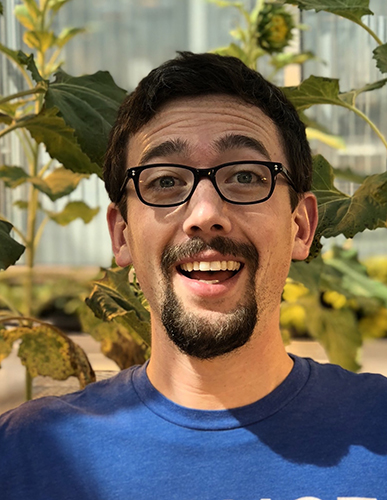
Daniel Jones
I am an Assistant Professor of plant developmental biology at Auburn University. My primary interests are in understanding how conserved signaling pathways have been modified during evolution to regulate development of distinct floral morphologies. Asteraceae capitula are exciting and beautiful systems within which we can ask these important biological questions. My lab utilizes comparative genomics and developmental genetics in the Asteraceae to better understand capitulum evolution and identify genes linked to floral variation across the family.
www | danielsjones ( a ) auburn.edu

Nicolás Lavandero
I am interested in the Taxonomy and Systematics of Asteraceae of southern South America, specifically of the subfamily Mutisioideae, Tribe Nassauvieae. I am currently working on the genus Leucheria and related genera, Marticorenia, Moscharia and Polyachyrus, using an integrative approach (NGS, morphology and ecology)
www | nglavand ( a ) uc.cl

Isaac Lichter-Mark
Graduate student in the Jepson Herbarium at UC Berkeley studying the rock daisy tribe (Perityleae). Interested in new world sunflowers (Heliantheae s.l.) especially their evolution on islands and insular rock habitats.
www | ilichtermarck@berkeley.edu

Benoit Loeuille
I study the evolution of morphological, anatomical and phytochemical diversity of Neotropical Asteraceae in a phylogenetic context, focusing in the systematics of the tribes Vernonieae and Heliantheae. My secondary research lines include taxonomic, phylogenetic, and floristic studies of the Gnaphalieae, Vernonieae, and Heliantheae tribes. I also work in theory of Systematics, History and Philosophy of Science (related to classification and homology) and Ancient Botany history (translation of Theophrastus). I am currently an Assistant Professor at the Federal University of Pernambuco (Brazil), Botany Department.
"
www | benoit.loeuille ( a ) gmail.com

Anthony Magee
I am interested in the systematics (taxonomy, phylogenetics and evolutionary biology) of the early, largely African, lineages of the plant families Apiaceae and Asteraceae (particularly the tribes Anthemideae and Astereae), and more recently the succulent plant family Aizoaceae. I am currently also completing a floristic treatment for the arid Nama Karoo region of South Africa. I am fortunate to work with a dynamic and highly talented team of postgraduate students and interns, almost all of which are being trained in both traditional and modern aspects of plant systematics, as well as collaborators from within South Africa and abroad.
a.magee ( a ) sanbi.org.za

Ary Mailhos
I'm a graduate student from Uruguay with an interest in systematics and taxonomy of Compositae. I've carried out the treatment for Coreopsideae and Cichorieae for the Uruguayan flora and am currently working on my master's degree focused on the taxonomy of Hypochaeris (Cichorieae) from the region.
arymailhos ( a ) gmail.com

Jennifer Mandel
I am an Associate Professor in the Department of Biological Sciences at the University of Memphis and the Assistant Director of the Center for Biodiversity Research. My research centers around understanding how genetic and genomic variation generate the patterns of plant biodiversity present in the world. A driving force of my research is to understand how changes to the environment, including land use and climate, affect species abundance and geographic distribution. In particular, in our lab we focus on the genomics and evolution of Asteraceae.
www | jmandel ( a ) memphis.edu

Robert McKenzie
My current research is focused on resolving the complex taxonomy and phylogenetic relationships of the predominantly southern African tribe Arctotideae and related tribes, especially the genera Arctotis, Berkheya and Gazania. The phylogenetic affinities of the tribally unplaced genus Heterolepis, which is affiliated with the Arctotideae group, are under investigation. I am also interested in historical biogeography, pollination and reproductive biology, and taxonomic nomenclature. In addition to my research interests, I am active in freelance editing and English language editing of academic manuscripts.
robt.mckenzie ( a ) gmail.com

Daniel Mendes
Graduated in Biological Sciences from the Federal University of Mato Grosso do Sul, Pantanal Campus (2022). Master's Studant in Plant Biology from the Federal University of Uberlândia (UFU). He is currently developing research in the Brazilian Pantanal, working mainly on the following themes: Taxonomy, Biogeography, and Angiosperm Systematics, with an emphasis on the Asteraceae family (Heliantheae tribe).
dm.mendes08 ( a ) gmail.com

Abigail Moore
I am an assistant professor at the University of Oklahoma and curator of the Robert Bebb Herbarium. I study how plants adapt to live in different environments, using DNA sequence data. Although I am interested in all plants, I have focused most on the Compositae, especially Grindelia (Astereae). Grindelia is particularly interesting because it grows in many different habitats, is very drought tolerant, and has some polyploid species. I am also interested in taxonomy and floristic work.
www | abigail.j.moore ( a ) ou.edu

Erika R. Moore-Pollard
I am interested in phylogenomics, biogeography, and character trait evolution. Currently, I am working on understanding the evolutionary history and species relationships of the genus Packera (Senecioneae).
www | ermoore3 ( a ) memphis.edu

Andrey Ojeda
My main interests revolve around the Asteraceae family in the páramo region and its influence on the formation of vegetation types. I am also interested in ecological restoration.
aojeda ( a ) tropicoalto.ong

Jairo Pintos
My main interests are in highland neotropical-northern high Andean Asteraceae, Espeletia complex taxonomy and assemblages, rare-endangered compositae.
www | jpinto ( a ) tropicoalto.ong

Azad Rastegar
My research interests focus on plant diversity, and systematic botany with a special focus on Compositae family in SW Asia. I also interested in phytogeography, distribution patterns, species distribution modelling and climate change effects on ecosystems. Due to my personal interests in field trips, during the last 10 years I've made good collections of plants from all geographic regions of Iran, and Iraq.
rastegar.azad (a ) gmail.com

Lizzie Roeble
I am a PhD student interested in the evolution and biodiversity of plants. I study the evolutionary patterns and processes that shape plant diversity across islands. My research focus is on the incredibly diverse daisy family (Asteraceae) and its evolution and diversification in the context of island biogeography.
www | lizzie.roeble ( a ) naturalis.nl

Gisela Sancho
I am a researcher at Museo de La Plata. I specialize in the systematics of the flowering plant family Compositae with emphasis in Astereae and basal lineages of the family such as Gochnatieae. I have conducted fieldwork throughout southern South America, New Zealand and Costa Rica. My research interests cover systematics and floristics.
sancho ( a ) fcnym.unlp.edu.ar
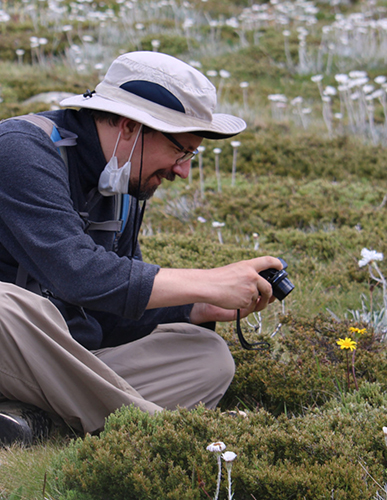
Alexander Schmidt-Lebuhn
I am a scientist at Australia's national research agency CSIRO and work at the Australian National Herbarium in Canberra. My interests include the taxonomy, phylogenetics, and biogeography of Australian Compositae, in particular Gnaphalieae and lately Senecioneae; application of phylogenetics, taxonomy, and biological collections in e.g. biosecurity, weed, and biocontrol research; phylogenetic systematics; and the use of machine learning in species identification and collections science.
www | alexander.s-l ( a ) csiro.au

Jaydeep Sharma
Currently i am working on the Asteraceae of Gujarat, India.
My major work is on the systematics and palynology of Compositae.
jaydeep.s-botany ( a ) msubaroda.ac.in

Richard Spellenberg
Retired plant taxonomist from New Mexico State University. Specialized in Astragalus, Quercus, SW US flora. Author of The Sunflower Family, 2019, published by Botanical Research Institute of Texas.
spelly ( a ) zianet.com

Alfonso Susanna
Alfonso Susanna (Madrid, 1955). Senior scientists at the Botanic Institute of Barcelona I work on tribe Cardueae since 1981. Together with Núria Garcia-Jacas, I pioneered the molecular studies in the tribe in 1993-94. In 2006, the IBB hosted the TICA meeting that was at the origin of the 2009 book on the Compositae. I compiled the latest revisions of the Cardueae, together with Dr Garcia-Jacas. In 2018, we started a collaboration with Dr Jennifer Mandel from Memphis University. Our latest results have deeply changed the classification of the tribe. Currently, our focus are sutribes Saussureinae (almost terminated) and Carduinae. Besides systematic work, I have carried important field collections in Middle Asia, North Africa and the Mediterranean Region, always focusing on the Cardueae.
"
www | asusanna ( a ) ibb.csic.es

Salvatore Tomasello
I am a postdoc at the Department of Systematics, Biodiversity, and Evolution of Plants of the University of Göttingen (Germany). I am interested in plant evolution, and especially in how polyploidy and hybridization trigger diversification processes in plants. My research focuses on the use of different sources of data (e.g., genomic, phenotypic) to solve (reticulate) evolutionary histories and species delimitation issues in plants, with special focus to members of tribes Anthemideae and Heliantheae.
www | salvatore.tomasello ( a ) uni-goettingen.de

Jonilson Trindade
Experience in the areas of research and teaching over biodiversity (mainly plants). Agronomist, Biologist and Master in Science, currently doing PHD in Biodiversity and Biotechnology at the Museu Paraense Emílio Goeldi (MPEG) and Universidade Federal do Pará (UFPA), developing research with exotic and native plant species in the Amazonia, in several groups as Asteraceae.
www | jonilsontrindade ( a ) museu-goeldi.br

Luis Valente
I'm an evolutionary biologist interested in the origins of biodiversity in a geographical context - particularly on islands. I also study the effects of anthropogenic extinctions on isolated ecosystems. I use modelling, phylogenetic and genomic approaches to reconstruct diversification dynamics over evolutionary time scales. I work on a variety of organisms (plants and animals) from islands and continental biodiversity hotspots. I am particularly interested in Asteraceae because this group is so diverse on islands, and also includes many highly threatened species on islands. I study the interplay between speciation and anthropogenic extinction in Asteraceae in several insular systems around the world.
www | luis.valente ( a ) naturalis.nl
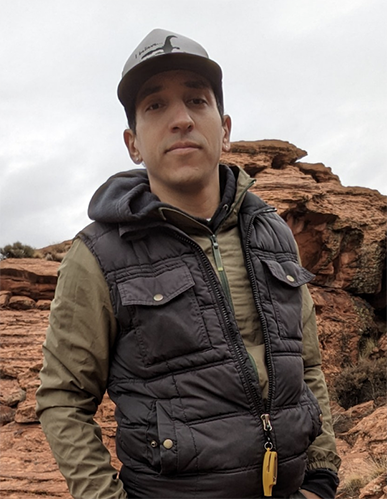
Zachary Valois
Underachieving life-student, broadly interested in evolutionary ecology, functional morphology, and taxonomy. Specific interest in the evolution of ecological novelty, assemblages, and guilds. Focused on arachnida and plants of the southwestern U.S. as model organisms.
zachary.valois ( a ) gmail.com

Victoria Valtierra
My main academic interests includes the systematics and taxonomy of the Compositae family, in the Astereae tribe. In my Masters, I reviewed the “Carquejas” from Uruguay (Baccharis sect. Caulopterae), a group with medical uses, and a wide distribution in the country. At the same time I participate in the Flora of Uruguay project with the treatment of the Compositae family.
www | mvvaltierra ( a ) gmail.com

Jessica Viera
My lines of research are mainly oriented to the study of diversity and evolution of plants belonging to the Asteraceae family. Within this family I am carrying out systematic, phylogenetic, phylogeographic, biogeographic studies, modelling of potential distribution of species (with GIS tools) and floristics in different groups.
jessicavierabarreto ( a ) gmail.com

Hassan Walaa
I am a lecturer in plant taxonomy and flora at the Beni-Suef University, Egypt.
azmeyw ( a ) gmail.com
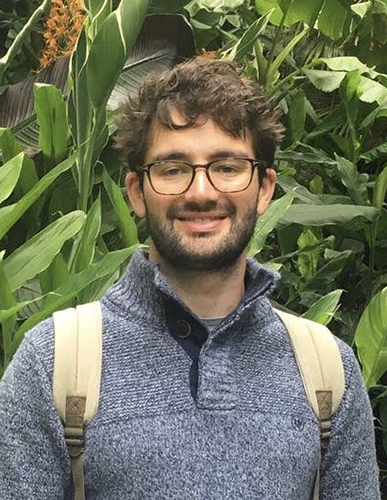
Oliver White
Phylogenetics, population genetics and transcriptomics. Macaronesian endemic lineages.
o.william.white ( a ) gmail.com

Contact: info@composite.org